Why Booking a Hair Transplant via Medic-Tours is the Better Option
Bodytite is a revolutionary procedure that has changed the game for cosmetic surgery. It is a minimally invasive procedure that involves using radiofrequency energy to
What you should watch out for when doing a hair transplant surgery in Turkey
Bodytite is a revolutionary procedure that has changed the game for cosmetic surgery. It is a minimally invasive procedure that involves using radiofrequency energy to
Services – Hair transplant
Bodytite is a revolutionary procedure that has changed the game for cosmetic surgery. It is a minimally invasive procedure that involves using radiofrequency energy to
How to choose clinic for Afro Hair
Bodytite is a revolutionary procedure that has changed the game for cosmetic surgery. It is a minimally invasive procedure that involves using radiofrequency energy to
Hair transplants and techniques
Bodytite is a revolutionary procedure that has changed the game for cosmetic surgery. It is a minimally invasive procedure that involves using radiofrequency energy to
Hair Transplant in Turkey
Bodytite is a revolutionary procedure that has changed the game for cosmetic surgery. It is a minimally invasive procedure that involves using radiofrequency energy to
Hair Transplant in Mexico
Bodytite is a revolutionary procedure that has changed the game for cosmetic surgery. It is a minimally invasive procedure that involves using radiofrequency energy to
Hair transplant in Greece
Bodytite is a revolutionary procedure that has changed the game for cosmetic surgery. It is a minimally invasive procedure that involves using radiofrequency energy to
DHI Vs. FUE
Bodytite is a revolutionary procedure that has changed the game for cosmetic surgery. It is a minimally invasive procedure that involves using radiofrequency energy to
Hair transplant – all you need to know before the surgery
Bodytite is a revolutionary procedure that has changed the game for cosmetic surgery. It is a minimally invasive procedure that involves using radiofrequency energy to
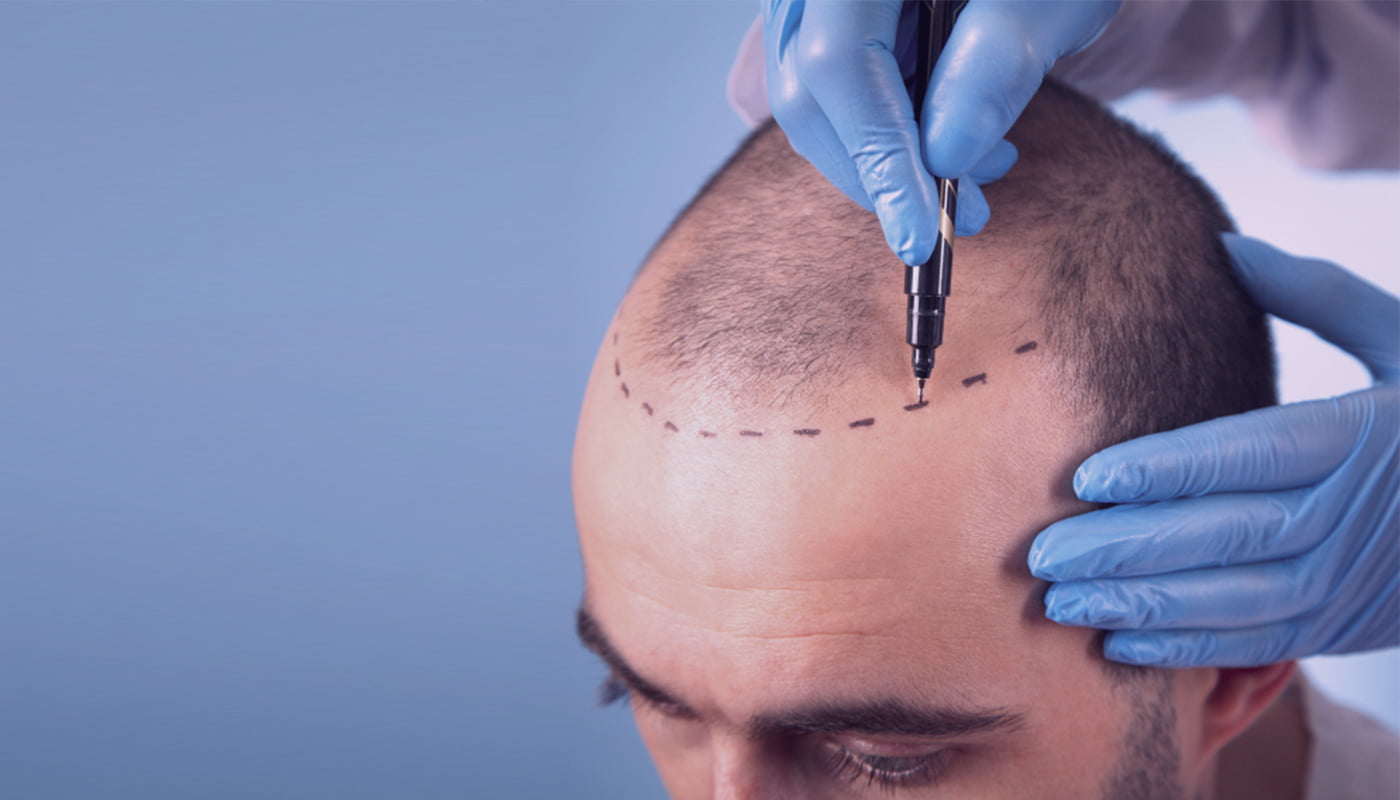
Regain Your Confidence with an Affordable Hair Transplant
A hair transplant could be just what you need to regain your confidence—and your zest for life.
In most cases, the transplant hair follicles are taken from the bottom of the head, near the neck.
They’re then transplanted in the balding area of the head and given time to grow naturally.
Performed in sterile conditions by highly professional doctors, hair transplants are usually
carried out under a local anesthetic. And when the procedure is successful, the newly transplanted hair is indistinguishable from naturally occurring hair.
The Two Most Common Types of Hair Transplants
There are two types of hair transplants performed by our clinical partners around the world. We
can discuss both—and which one is most appropriate for you—during our initial consultation.
They are:
Follicular Unit Transplant (FUT)
This type of hair transplant involves the use of a strip of skin taken from the back of the patient’s
scalp. FUT requires the surgeon to remove a large enough strip to cover the number of follicles
required to cover the patient’s bald patch.
The surgeon must then individually remove the hair follicles from the skin strip before re-
inserting them into the balding scalp. The average skin strip required to perform this cosmetic
procedure is around a centimeter wide. The entire procedure takes between four and eight
hours to complete.
In most cases, the FUT procedure involves these steps:
● The desired hairline is drawn onto the scalp
● Hair at the donor site is trimmed
● A strip of skin is cut from the donor site
● The hair follicles are removed from the strip and prepared for reinsertion
● The skin at the donor site is closed with sutures
● The hair follicles are re-inserted into the bald area of the scalp, one by one
● Antibiotics are administered, and the treated areas of the scalp are bandaged to prevent
infection
Follicular Unit Extraction (FUE)
Follicular unit extraction involves the removal of individual hair follicles from the skin before
transferring them to thinning areas of the scalp. Over the years, this type of hair transplant has
become more popular than FUT, thanks to the most consistent and natural results it delivers.
Individual hair follicles are removed directly from the patient using a series of ‘micropunches’.
Unlike FUT, this method leaves no visible signs of surgery.
The FUE procedure involves the following steps:
● The clinical team shaves down both the donor and transplant sites
● The surgeon uses a ‘micropunch’ utensil in order to extract individual follicles
● The surgeon then creates a series of incisions in which the extracted follicles will be
inserted
● The follicles are inserted into the incisions, one by one
● The surgeon completes the procedure by cleaning the treated area and applying
bandages where necessary
Which Type of Hair Transplant Is Right for Me?
There are advantages to both types of hair transplantation technique, although FUE is more
popular because:
● The healing process is faster
● There’s less pain after surgery
● There’s no significant scarring
● Hair can be taken from any part of the body
● Hair can be taken from areas of low follicle density
FUT procedures tend to be cheaper and quicker, and they’re more practical if the patient has a
large area of scalp to cover.
What to Expect After a Hair Transplant
Your clinician will tell you how to care for your hair and wound (if you have FUT) during a post-operative review. The doctor may provide you with a special shampoo, antibacterial medication, and bandaging. You will need to carefully clean and re-dress your scalp for seven to 10 days
after the procedure.
Possible side effects to look out for include:
● Irregularly patterned hair
● Significant scarring
● Bumps and lumps
● Prolonged bleeding
● Swelling
● Persistent and intense pain
● Numbness
● Sores and cysts
Before & After

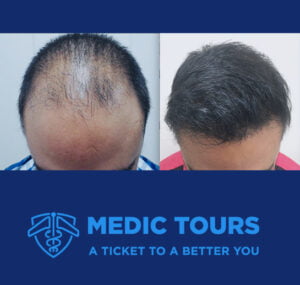
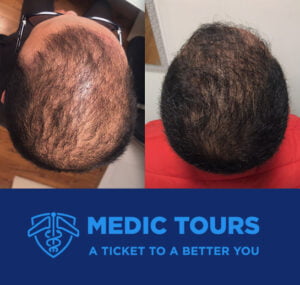
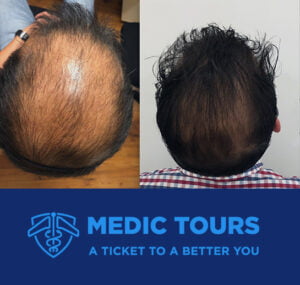
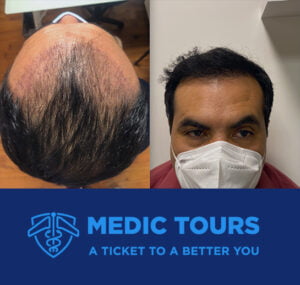
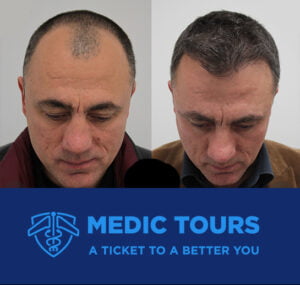
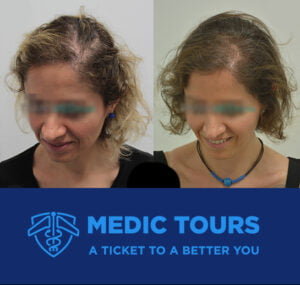
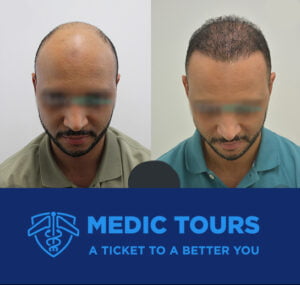
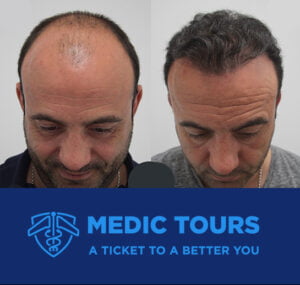

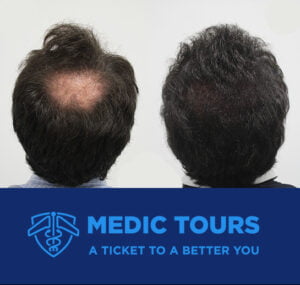
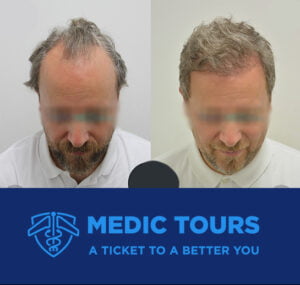
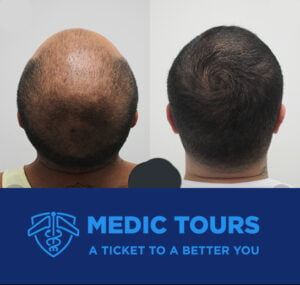

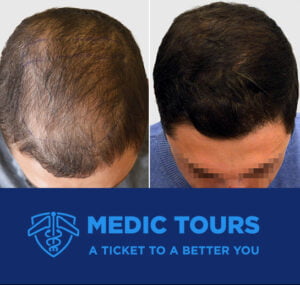
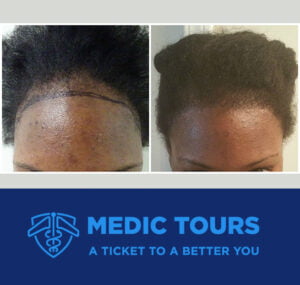
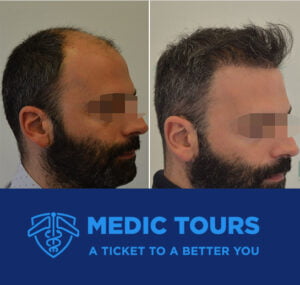

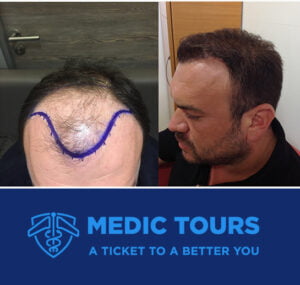

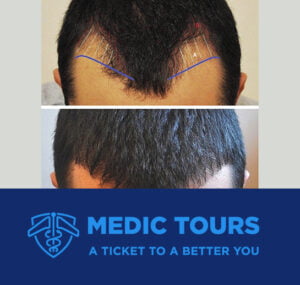
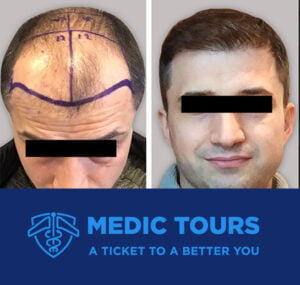
Health Tips & FAQ
What is the success rate of hair transplants?
A hair transplant requires hereditarily solid and sound hair. Customarily found around the back and sides of the head. Commonly known as the giver range or secure zone. As a result, these hairs are safe from hereditary hair misfortune. Too known as male and female design hair loss. It is critical to note. Interchange hair misfortune conditions can influence hair development within the “safe area”. For illustration footing alopecia or chemical harm. That aside, hair can be effectively expelled from the giver secure zone. Subsequently exchanged to regions of hair misfortune. Victory depends on a number of vital variables. Foremost is the involvement and competence of the enrolled specialist performing the hair transplant. Performed to a tall standard a hair transplant will develop and see characteristic.
Will I have a full head of hair?
A hair transplant cannot supplant like for like hair misplaced, that’s inconceivable. As a result, a hair transplant needs to make the dream of fullness especially when treating progressed stages of hair misfortune. This can be achieved by the cautious conveyance of the hair follicles to piece to scalp being unmistakable. When this can be accomplished the see of a good head of hair is the result. A hair transplant can be a great choice for minor to progressed hair misfortune stages on the correct candidate.
What care would I receive after restoration surgery?
Patients all get person consideration in connection to their wants and the nature of the operations they require. Light head cover can be worn quickly. Any deadness around the beneficiary destinations will reduce in 3 months and the giver hair will shed to be supplanted by modern development in 14-28 days and hair development commences in 3-4 months.
Can I have a hair transplant if I have a medical condition?
Last choices as to whether to embrace surgical methods rest with the specialist. Full revelation is required with respect to pre-existing restorative conditions.
Am I a good candidate for hair transplantation surgery?
The perfect candidate for hair rebuilding surgery has sound hair on the sides and back of the head. These destinations are utilized as benefactor zones for the joins. Men and ladies with well-defined hair loss, diminishing hair and those with restricted hair misfortune due to scalp wounds or rehashed restorative strategies are for the most part great candidates for hair rebuilding surgery. The Penn group will prompt you of treatment choices amid an starting interview.
Does the procedure hurt?
With the use of local anesthesia and intravenous sedation, discomfort during the procedure is eliminated.
Will my transplanted hair eventually fall out?
When you have hair grafted from the back and sides of your scalp to your balding areas, called an autograft, the hair will grow for the rest of your life.
What are the risks involved?
Regardless if using the FUE or FUT techniques a hair transplant is a minor cosmetic surgical procedure. All care and attention is on the patient’s well-being, before, during and after. Performed by a certified board registered surgeon the Hair Dr is confident in our hair restoration qualifications and quality.
Are there any restrictions to sporting activities after the procedure?
Most patients can continue their top pick sports inside a week or so. To a great extent subordinate on how forceful the movement may be. This will vary between the strategy utilized. FUE incorporates a quicker recuperation time compared to FUT.
